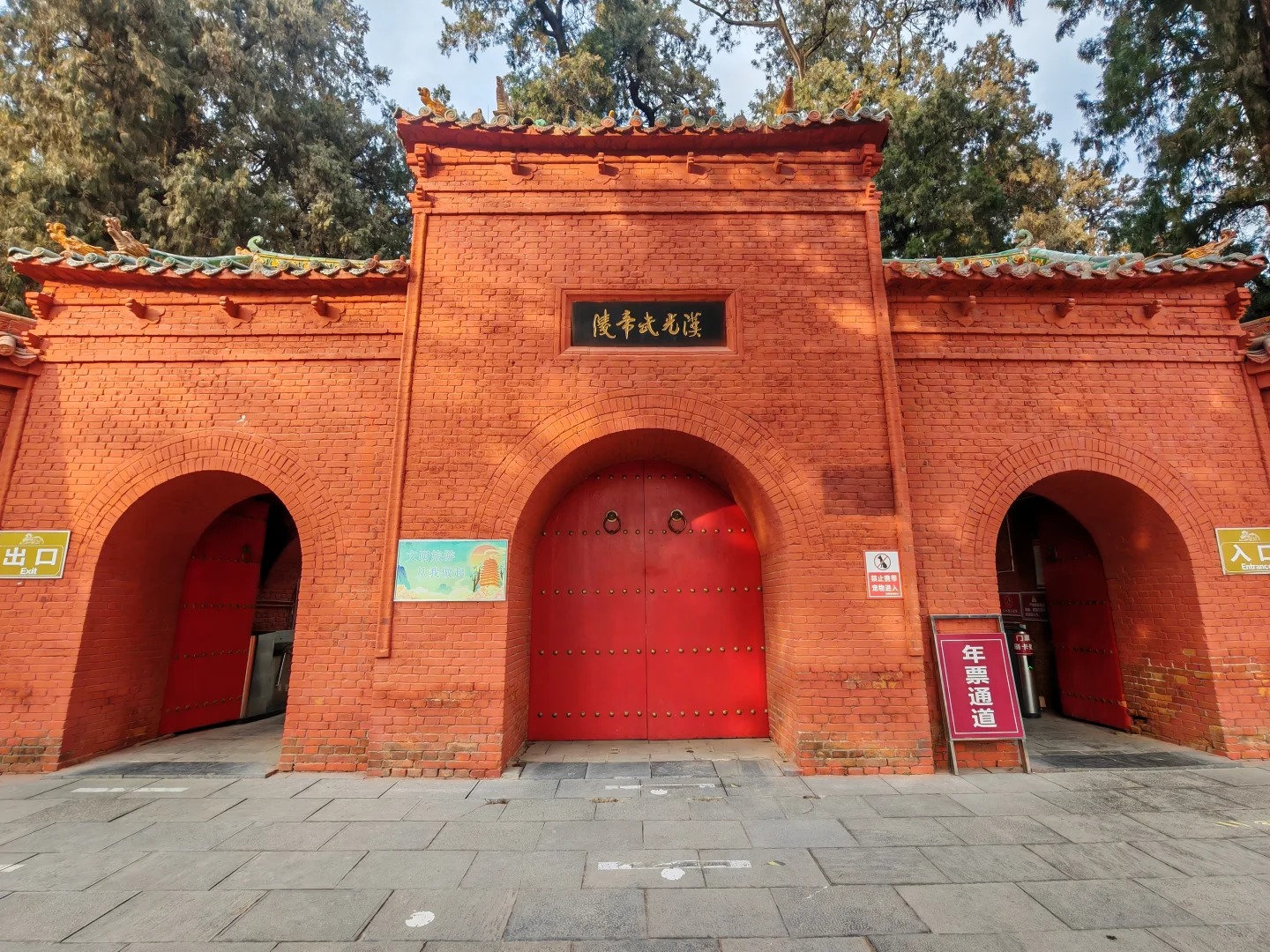Han Emperor Guangwu Mausoleum
Historical Overview
Emperor Guangwu (Liu Xiu) reigned from 25–57 CE, reunifying China after the collapse of the Western Han Dynasty and establishing the Eastern Han capital in Luoyang. His mausoleum, constructed during his lifetime, reflects the Han Dynasty’s emphasis on filial piety and cosmic harmony. The site was strategically chosen near The Yellow River, symbolizing imperial authority over the land. Over centuries, the mausoleum survived looting and natural erosion, with major restorations occurring during the Ming (1368–1644) and Qing (1644–1912) dynasties. In 1961, it was listed as a Major Historical and Cultural Site Protected at the National Level, ensuring its preservation amid modern development.
Structural Layout
The mausoleum complex follows a symmetrical layout aligned with Confucian and Daoist principles, emphasizing balance between humanity and nature. Key sections include:
- Tomb Mound: A massive earthen mound rising 20 meters high, symbolizing the emperor’s ascent to the heavens.
- Sacred Way: A 500-meter-long path lined with stone statues of animals (lions, horses) and mythical creatures (bixie, a lion-like guardian), representing imperial protection.
- Stone Tablets: Inscribed with eulogies praising Emperor Guangwu’s virtues and achievements, written by renowned scholars of his era.
- Ceremonial Halls: Restored wooden pavilions where ancestral rites were performed, featuring traditional Han-style architecture with curved roofs and intricate carvings.
- Surrounding Gardens: Lush green spaces with ponds and pavilions, designed to evoke the tranquility of a paradise garden.
Major Attractions
- Stone Lion Guardians: Pair of 3-meter-tall lions carved from single granite blocks, symbolizing strength and vigilance.
- Bixie Sculptures: Mythical beast statues believed to ward off evil spirits, unique to Han Dynasty tombs.
- Eulogy Tablets: Two 6-meter-high stone stelae inscribed with over 1,500 characters each, detailing Emperor Guangwu’s reign and moral legacy.
- Underground Chamber (Closed to Public): Rumored to contain jade burial suits and precious artifacts, though excavations remain restricted to protect the site.
- Ceremonial Pavilion: A reconstructed hall where visitors can witness reenactments of ancient ancestral rituals during Festivals.
- Yellow River Overlook: A viewpoint offering panoramic vistas of the Yellow River, linking the mausoleum to China’s lifeblood river.
Suggested Itineraries
-
Classic Route (1.5–2 hours):
Entrance → Sacred Way → Stone Lion Guardians → Bixie Sculptures → Eulogy Tablets → Ceremonial Pavilion → Yellow River Overlook.
Highlights: Core statues, inscriptions, and river views. -
Cultural Immersion (3–4 hours):
Classic Route + Guided tour of restored halls → tea ceremony in the garden pavilion → Participation in a simplified ancestral ritual (seasonal).
Highlights: Deep dive into Han Dynasty culture and traditions. -
Extended Exploration (Half Day):
Cultural Immersion + Visit to nearby Han Guanglie Temple (dedicated to a Han general) → Lunch at a local farmhouse serving Han-style cuisine.
Highlights: Combining history with regional culinary and religious experiences.
Ticket Purchase
- Online: Book via Ctrip, Trip.com, or the official Luoyang Cultural Heritage Bureau website (up to 5 days in advance).
- On-Site: Tickets available at the entrance kiosk, but queues peak during weekends and holidays.
- Prices:
- Adults: ¥40 (peak season, April–October), ¥30 (off-season, November–March).
- Students/Seniors: ¥20 (peak), ¥15 (off-season).
- Free: Children under 1.2m, disabled visitors, and military personnel.
Transportation
- By Bus: From Luoyang Bus Station, take Bus 85 to Mengjin County (1 hour), then transfer to a local minibus to the mausoleum (15 minutes).
- By Taxi/Private Car: Direct ride from Luoyang city center (~45 minutes, ¥80–120 one way).
- By Subway: Not available; buses and taxis are the primary options.
- Parking: Free parking lot at the site entrance for private vehicles.
Best Time & Tips
- Peak Hours: Avoid 10 AM–1 PM; arrive early (8:30 AM opening) or late afternoon.
- Crowds: Weekends and national holidays (e.g., Qingming Festival) are busiest; weekdays offer solitude.
- Weather: spring (April–May) and autumn (September–October) are ideal for clear skies and mild temperatures.
- Essentials:
- Wear comfortable walking shoes (uneven stone paths and hills).
- Bring sunscreen, a hat, and water (limited vendors on-site).
- Photography allowed everywhere except inside ceremonial halls during rituals.
- Respect cultural norms: Avoid loud conversations near the tomb mound and do not touch ancient statues.
Contact Us
What Our Clients Say?
Based on 10,000+ traveler reviews














